Introduction
The 2001 season involved both excavation and a second study season. From early June about 80 people comprising the Berkeley, Poznan and West Mound teams excavated in three excavation areas (BACH1, TP and West respectively). By mid July the teams changed with the departure of the excavation teams and the arrival of up to 40 members of the Cambridge/Stanford team involved in the publication of the North, South and Kopal area excavation reports covering the years 1995 to 1999. In late August the Konya Plain Survey team also returned for a last field season before their study season next year.
From mid July to early September members of the Cambridge/Stanford team worked intensively on post-excavation. In the 2000 study season and in the months since that time, project members had worked on their own specialist reports covering a wide range of topics from the description of the excavation itself individual data sets such as lithics, archaeobotanical and faunal. These primary reports were pre-circulated and were presented for discussion to all members of the project at the start of the 2001 study season.
The results of these two years of study will be produced in three volumes to be published jointly by the British Institute of Archaeology at Ankara and the McDonald Institute in 2003.
|
Through the 2001 study season two types of seminar took place on an almost continuous basis. In the first type, the data were considered context by context. In other words, all the different types of finds such as faunal, ceramic, lithic, phytolith and botanical material were considered for each building or space, phase by phase in order to arrive at a specific interpretation of depositional and post-depositional activities. Typically these discussions involved 10-15 people, each with their own type of data on a laptop, sitting round a table and looking at finds, videos, pictures, histograms and so on from each deposit, space or context. The aim was to reach some consensus on the interpretation (Figure 2). |
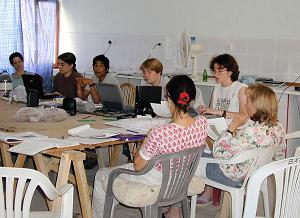 Figure 2: Discussions during the study season |
The second type of discussion was thematic. All project members with information to contribute to particular chapters such as feasting, landscape, discard, house life cycles, food, politics of space, took part in these discussions. Theme leaders were identified to take notes and produce chapter outlines that were posted on the local computer network. These were used as the basis for further discussion and elaboration of the chapter outline. Seminars were also held with a team from the local village of Küçükköy who have worked with us over the years to integrate local interpretations and knowledge. All volumes will contain quotes from these discussions, which were video recorded.
The aim of these discussions and joint analyses of the data is to create a high degree of integration of all available types of data. In this way interpretation is better informed and can have greater depth.
Some of the topics we will address cover changing social relationships, modes of production, and gender relations, interpretation of the reasons for the introduction of pottery and for the role of cattle in the economy. A large-scale programme of obsidian sourcing has identified changing patterns of trade and exchange. There is much new evidence about diet and food processing and preparation.
Other activities
|
Work continued on the experimental reconstruction of a Neolithic house located near the entrance of the site. This provides both visitors and the team with an idea of what a Neolithic house was like in terms of space, lights and movements. The internal walls plastered and last season were polished with pebbles to recreate the smoothness we find in excavation An internal oven was built against the south wall, with a ladder positioned over it to the roof access (Figure 3). Platforms were built and plastered against other walls and doorways modified to appear as crawlholes. Next year we hope to further furnish the house with wall paintings, mouldings and installations. |
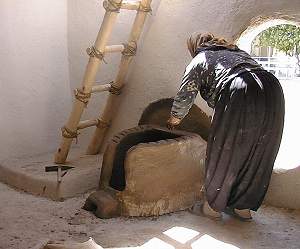 Figure 3: Hatice Yaşlı building the oven inside the reconstruction house |
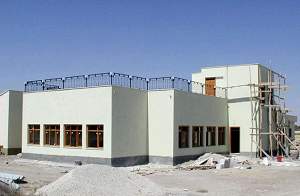 Figure 4: A new addition to the dig house |
During most of the summer season we shared the site with construction workers who were building the new library and seminar hall (Figure 4). During the excavations for the foundations two Byzantine kilns were found and excavated. Both are now preserved in situ. The new building is impressive, the space will be used as the excavation lab, and we will be able to hold our meetings and seminars in a perfectly made space. A feature of the new building is the roof terrace, which saw some recreational use in the form of parties and star-gazing sessions but in future will see more serious use as a secure finds processing/drying area. |
Another improvement in the infrastructure was provided by KocSistem who arranged for a network of computer cabling to be laid throughout the labs. After a week of infernal noise from the drilling of holes through walls to pass the cables from room to room calm returned. This now enables easy computer networking from any lab.
Plans are underway to refurbish the on-site visitor facilities. An Istanbul team, Atölye Mimarlik, has drawn up plans to re-lay the site entrance with new paths, car parking facilities, waiting areas and information panels. The building itself is planned to be re-clad in material which will distinguish it from the flanking dig house buildings. Inside an upper gallery will be erected, and there are plans for an activity areas, computer visuals and more new and innovative ways of displaying the process and interpretation of the excavation at Çatalhöyük.
Last year the Çatalhöyük Thames Water Scholarship Fund was established for Turkish archaeologists associated with the Çatalhöyük Research Project on related studies. This allows students to enhance their studies by attending university courses abroad in a wide range or archaeological subjects. This year the grant was divided between seven applicants: Adnan Baysal towards his PhD on groundstone analysis at University College London, Basak Boz towards her PhD on human tooth analysis at Haccetepe University, Ankara, Meltem Agcabay and Emin Özdemir to attend english language schools in the UK, Burcu Tung to study Micromorphology in Italy, Nurcan Yalman towards her PhD on ethnoarchaeology at Instanbul University with guidance from UCL, and Göze Akoğlu for Dating Techniques at Reading University. We hope to have as many successful candidates in 2002. Interested candidates should request an application form from the Project Office in Cambridge (guidelines and forms are also available on this web site). The deadline for 2002 (academic year 2002/2003) is the 31st of April 2002.
In January 2001 the Turkish Friends in Istanbul organised a concert at Boğaziçi University where the composer Tuluyhan Uğurlu performed his composition entitled "Çatalhöyük". The Turkish Friends also organised a series of talks with the Alumni Association of Boğaziçi University, Professors Ian Hodder, Mehmet Özdoğan and Ufuk Esin gave speeches. The Turkish Friends are also planning an exhibit entitled "Art in Prehistory", presenting the work of contemporary Turkish artists who were consciously or unconsciously influenced by the art and style of Catalhoyuk and other prehistoric settlements.
Following two years of research leave at Stanford University Professor Ian Hodder has now become a permanent member at the Department of Cultural and Social Anthropology at Stanford University although he also remains a research fellow of the McDonald Institute for Archaeological Research in Cambridge.
One big event of this summer was the opening of the Küçükköy Library in the local village. The initiative was instigated and organised by Ayfer Bartu of Koç University in Istanbul and is described in more details later. We organised a book-themed fancy dress party at the site in order to raise more funds for the purchase of more school books. Everyone joined in and money was raised by silent auctions for services such as breakfast in bed, back massages, and fortune telling. The weekend after the party, Ayfer and Can returned from their shopping trip in Konya with a car load of school books and school supplies. On the 30th of August, the children from Küçükköy came to the dig house with their teachers and both the children and team member carried the books to the village (Figure 5). |
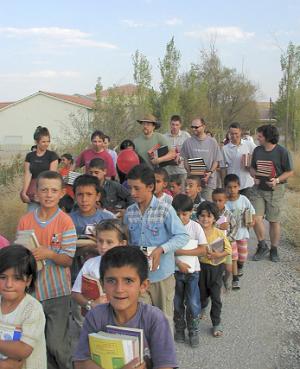 Figure 5: Schoolchildren and team members carrying the books to Küçükköy Library |
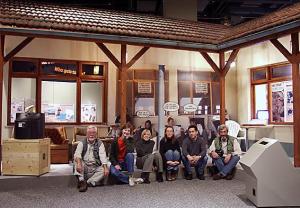 Figure 6: The SMM team in front of the reproduction veranda which forms part of the centrepiece of their exhibition |
On September 29th 2001 the Mysteries of Çatalhöyük Exhibit opened at the Science Museum of Minnesota. It gives visitors the opportunity to take a look at the archaeological excavations and analyses carried out by the project. Through hands-on activities and colourful displays, visitors of all ages are invited to experience the research project at Çatalhöyük. You can call the Science Museum of Minnesota in St.Paul, MN on (651) 221-9444 for more Information, or look at The Mysteries Web site. |
In October we were sorry to see Becky Coombs leave her post as Project Administrator in Cambridge, and wish her every success for the future. In November we welcomed Christina Clements to the Çatalhöyük Office, she will now be your point of contact here. Our main office e-mail address has also changed to catal@hermes.cam.ac.uk. Personal addresses remain the same.